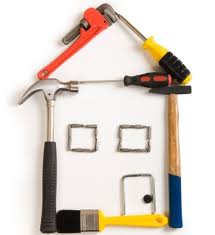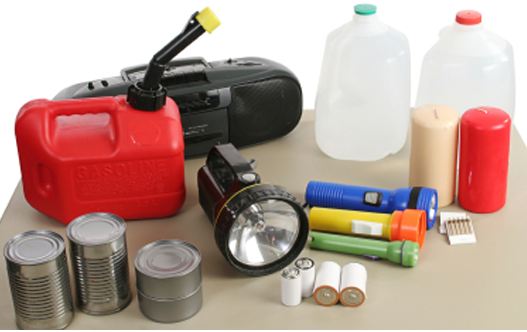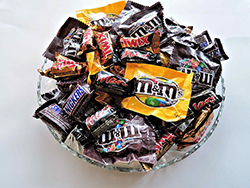
Home invasions and vandalism is on the rise. As many as one in five homes are invaded annually in the United States. One tool thieves use is lock bumping. They use a bump or rapping key to unlock pin tumbler locks and gain access to your home. Learn about lock bumping as you take steps to secure your home and peace of mind.
How Lock Bumping Works
Typically, you can only open a door with a key that’s specific to that lock. The key’s design aligns with the lock, pushes the pins into place above the shear line and unlocks the door. A bump key is designed to also unlock a door except the thief inserts it into the keyhole and taps the key with a screwdriver or hammer. The bumping pushes the pins in the lock above the shear line and pops the lock.
Thieves can easily learn how to make a bump key thanks to numerous online how-to videos and instructions. With a collection of 10 different bump keys, they can open 90 percent of the doors in the U.S., and the entire process takes a few seconds. Tips That Protect Your Home From Lock Bumping
Protect your home and prevent lock bumping with several steps.
- Buy a different pin tumbler lock. Certain locks are harder to bump. When shopping for new locks, look for ones that are:
- Made with security pins
- Not made from hardened steel
- Designed with programmable side bars and not top pins
- Equipped with a trap pin
- Shallow drilled where one of the interior pins is slightly shallower than the others
- Change the spring tension. Stronger top springs in the lock make bumping harder, so ask a locksmith to make at least two of the top springs firmer.
- Replace the traditional pin tumbler lock. Instead, invest in a disk tumbler, time, combination, electronic or electromagnetic lock. They don’t contain pins and are less vulnerable to bumping.
- Reinforce existing locks. If you don’t want to replace all the locks in your home, replace the door’s metal strike plates. It mounts on the doorjamb and costs about $10.
- Lock your door always. Whether you’re hanging out at home, working in the yard or garage, going to work or taking an extended vacation, lock your doors. Don’t make it easy for a thief to enter your home!
Purchase adequate insurance. Homeowners and renters insurance won’t prevent lock bumping, but it can give you peace of mind. With the right insurance, you can replace any of your possessions that are lost, stolen or vandalized.
Your home’s security and peace of mind are vital. Understand and prevent lock bumping as you protect your home and family.
Read more

With the arrival of spring, you might be itching to start home improvement projects. Certain projects can reduce your home insurance costs, so consider focusing on those as you save money and improve your home.
Replace Washer Hoses
An inexpensive no-burst stainless steel hose from your local hardware store can reduce your home insurance premium by 10 percent. Attach it to your washing machine and reduce one of the most common causes of water damage.
Install a Sturdy Garage Door
Because strong seasonal winds and other stormy weather can destroy your garage door and everything in this structure, install a sturdy garage door. One that’s hurricane-resistant or fitted with horizontal and vertical braces can save you 10 percent on your insurance premium and potentially pay for itself within five years.
Hang Storm Shutters
Wind-resistant shutters could reduce your insurance costs by as much as 20 percent, and they’re particularly important if you live in a hurricane zone. Both metal and roll-down shutters protect your home.
Purchase Trouble Detectors
Smoke and carbon monoxide detectors are two investments that reduce your home insurance premiums, but consider other trouble detectors, too. They provide plumbing failure warnings, detect furnace failure or alert you to frozen water pipes. Find leak detectors and other trouble detectors online or at your local hardware store.
Invest in Fire Extinguishers
For a savings of five percent, invest in fire extinguishers. Place one in the kitchen and on every floor or your home.
Invest in Carbon Monoxide Detectors
Place one in the kitchen and on every floor or your home.
Choose Fire-Resistant Siding
Save 20 percent on your insurance premium and give your home a new exterior appearance when you install fire-resistant siding. Metal, clapboard, fiber-cement and clapboards are all Class A fire-resistant materials that are available in a variety of colors and finish styles that meet your needs.
Inspect and Repair or Replace Your Roof
Because worn shingles on your current roof won’t do much to protect your home when windy weather arrive, consider replacing your roof. Select sturdy roofing materials like metal, shake or Class 4 modified asphalt shingles. Use six instead of four staples or nails per shingle for additional savings.
These spring home improvement projects can decrease your premium. You’ll also save money when you drop additional structure coverage, increase your deductible, make automatic payments and combine home and auto policies. Discuss the details with your insurance agent as you save money and protect yourself this season and throughout the year.
Read more
 Heavy rains, floods, hurricanes can all threaten your home and family this spring. While no amount of preparation prevents volatile spring weather, a home emergency kit helps you prepare to be safe and survive.
Heavy rains, floods, hurricanes can all threaten your home and family this spring. While no amount of preparation prevents volatile spring weather, a home emergency kit helps you prepare to be safe and survive.
Survival Essentials
A warm blanket, spare set of clothes and matches could make the difference in your survival. Pack these and all other essential supplies you might need in an airtight container that’s easily accessible.
Food and Water
The Red Cross suggests families store two weeks’ worth of food and water, which means you’ll need one gallon of water per person per day and a variety of easily prepared, non-perishable foods. Don’t forget to stock baby and pet food if necessary, too.
First Aid
Minor bumps and bruises can occur as your family rushes to safety. Your first aid kit should include basic first aid supplies like bandages, antibacterial cream, burn cream and pain reliever. Pack prescription medications, hearing aid batteries and other specialized medications if needed.
Hygiene Items
Toilet paper, toothbrushes and diapers are essential. Hand sanitizer and bleach should also be included in your emergency kit.
Stay Connected
You’ll want to stay connected to the outside world and signal for help, so include a battery-powered radio, extra batteries, your cell phone and chargers in your emergency kit. A flashlight and whistle for each person is also a good idea.
Tools
Whether you have to dig out of the basement or open a soup can, tools come in handy. Stock a multipurpose tool, work gloves, scissors, shovel, screwdriver set, hammer and manual can opener in your kit.
Important Papers
In the rush of an evacuation, you may forget to grab your purse or wallet. Copy important papers like your driver’s license, birth certificate, insurance policies and medical information. Store them, extra cash and your family’s emergency contact information in a waterproof bag to keep them safe.
This home emergency kit will play a big role in keeping you safe when volatile spring weather strikes. Update your insurance policies, too, as you stay protected and prepared.
Read more
 Is your house going to be filled with guests this holiday season? Is your pantry filled? Are you ready? Do you have a dog? Do you need more insurance in case someone gets hurt while on your property?
Is your house going to be filled with guests this holiday season? Is your pantry filled? Are you ready? Do you have a dog? Do you need more insurance in case someone gets hurt while on your property?
What Does Homeowner’s Insurance Usually Cover?
Most homeowners buy insurance to cover property damages from storms or accidents. It also covers personal property that’s lost, damaged or stolen. Plus, homeowner’s insurance pays for medical treatment or lawsuits associated with injuries people sustain while visiting you.
Make Sure you Have Enough Liability Coverage
You don’t expect accidents to happen in your house, but a visitor could trip over frayed carpet, get food poisoning or fall off the backyard trampoline. Or maybe the traditional Thanksgiving day football game gets rough, and your cousin’s expensive watch breaks, a seasonal storm blows a branch on your friend’s vehicle or the toilet overflows on your uncle’s expensive leather shoes. These injuries and damages are all examples of accidents that liability insurance covers.
Increase Your Coverage Limit
To ensure you have enough liability coverage, check out your policy and talk to your insurance agent. Most policies include a liability coverage limit of $100,000, but you should consider increasing that limit to $300,000 or even $500,000. An accident that affects more than one guest could quickly use up that coverage and leave you with a big bill. The increased coverage limit ensures everyone can receive medical treatment, and it reduces your out-of-pocket expenses if you’re sued.
Buy an Umbrella Policy
An umbrella policy is another insurance product to consider. It adds additional coverage that could be very beneficial as you entertain guests this holiday season. It’s an inexpensive way to cover additional expenses (not covered by your home owners).
Because you plan to host holiday guests this year, do more than stock the pantry. Update your homeowner’s insurance policy. It gives you peace of mind and prepares you for anything that might happen. Get in touch with us if you have questions.
Read more
 Are you planning to welcome trick or treaters to your home this month? Here are some suggestions to prepare your property for safe Halloween fun.
Are you planning to welcome trick or treaters to your home this month? Here are some suggestions to prepare your property for safe Halloween fun.
1. Clean your walkways.
Jack-o-lanterns are cute, but they are also tripping hazards. Remove decorations and all clutter or debris such as toys, yard tools or twigs from your sidewalks, steps and walkways.
2. Clear the yard.
Ideally, kids will stay on the walkway and front porch as they retrieve their candy. However, you will want to clear your yard so curious and excited kids don’t trip on any toys, branches or yard tools.
3. Repair broken sidewalks and steps.
Inspect your entryway and steps carefully. Then repair any broken stepping stones, loose railings or other hazards.
4. Install lighting.
Your front porch light is turned on to welcome trick or treaters, but you may also need additional lighting to ensure safety. Solar-powered walkway lights or a string of lights can illuminate your walkway and porch.
5. Change your location.
Instead of making kids walk up your long driveway or steep steps, stand or sit in a location that’s easy for them to access.
6. Lock doors and windows.
On trick or treat night, your attention is focused on your front door. Lock all the other doors and windows in your house so no one can gain access to your home while you’re out front. Remember to lock your garage and car, too.
7. Secure valuables.
Move your grill, mower and other valuables to the shed or another secure location. With this tip, you prevent potential burglars from adding your home to their future target list.
8. Protect your pets.
Some kids are scared of animals. Also, pets can become startled and bolt or bite when they see strange costumes or dozens of noisy kids. Always secure your pets so they and the kids are safe.
9. Extinguish candles.
Open flames pose a fire hazard. As an alternative, try battery-powered bulbs, or install Halloween-themed covers on your flashlights.
10. Consider allergies when choosing candy.
Many kids are allergic to nuts or dairy. Place a teal pumpkin on your step to show trick or treaters that you offer safe alternatives like books, stickers or toys.
11. Update your property and homeowners’ insurance policies.
Despite your best efforts to promote safety, someone could be injured while on your property (ask about Personal Umbrella Insurance – a surprising low annual cost for protection). Be sure your property and homeowners’ insurance policies are updated and include adequate coverage.
Trick or treating is a fun family activity. As you give out treats this year, follow these safety tips. They secure your property and reduce your liability risks.
Read more
 October, Adopt a Shelter Dog month, is a great time to add a dog to your family. Be careful which breed you adopt, though. Insurance companies use data from insurance claims and public health studies to create a high risk dog breed list, and your homeowners insurance premiums can increase based on the type of dog you adopt. You can save money when you choose a dog that’s not on the high risk list.
October, Adopt a Shelter Dog month, is a great time to add a dog to your family. Be careful which breed you adopt, though. Insurance companies use data from insurance claims and public health studies to create a high risk dog breed list, and your homeowners insurance premiums can increase based on the type of dog you adopt. You can save money when you choose a dog that’s not on the high risk list.
Working Breed Dogs
Agile, powerful and intelligent, Akitas, Alaskan Malamutes, Doberman Pinschers, Rottweilers and Siberian Huskies are also fiercely protective. If they’re not trained properly, these breeds could be potentially dangerous, especially to young children and small pets.
Terrier Breeds
Loyal and protective, American Pitbull Terriers and American Staffordshire Terriers have been bred to hunt. These traits mean they can become aggressive and tenacious if they’re cornered or frightened by one of your family members or guests.
German Shepherds
Police departments, military personnel and ranch hands appreciate this breed because the dogs are intelligent, hard-working and powerful. They’re also suspicious of strangers and won’t back down, which makes them a challenging breed for inexperienced owners to handle.
Chow Chows
Independent and strong Chow Chows are often kept as companions. These fluffy dogs can be aloof and stubborn, though, and should only be adopted by experienced dog owners.
Miscellaneous Breeds
Wolf Hybrid and Presa Canarios dogs exhibit strength and protective characteristics. However, they can also be unpredictable and quick to attack, making them potentially dangerous breeds. Friendly and docile Great Danes are listed on the high risk list, too, because of their size.
A dog adds fun and companionship to your home and family, and adopting a shelter dog is socially responsible. Before you choose a new pet, though, consider whether or not it will increase your homeowners insurance cost. If so, you may choose a different breed or reduce your home insurance premiums by installing a dog fence or raising your deductible.
Read more


 With the arrival of spring, you might be itching to start home improvement projects. Certain projects can reduce your home insurance costs, so consider focusing on those as you save money and improve your home.
With the arrival of spring, you might be itching to start home improvement projects. Certain projects can reduce your home insurance costs, so consider focusing on those as you save money and improve your home. Heavy rains, floods, hurricanes can all threaten your home and family this spring. While no amount of preparation prevents volatile spring weather, a home emergency kit helps you prepare to be safe and survive.
Heavy rains, floods, hurricanes can all threaten your home and family this spring. While no amount of preparation prevents volatile spring weather, a home emergency kit helps you prepare to be safe and survive. Is your house going to be filled with guests this holiday season? Is your pantry filled? Are you ready? Do you have a dog? Do you need more insurance in case someone gets hurt while on your property?
Is your house going to be filled with guests this holiday season? Is your pantry filled? Are you ready? Do you have a dog? Do you need more insurance in case someone gets hurt while on your property? Are you planning to welcome trick or treaters to your home this month? Here are some suggestions to prepare your property for safe Halloween fun.
Are you planning to welcome trick or treaters to your home this month? Here are some suggestions to prepare your property for safe Halloween fun. October, Adopt a Shelter Dog month, is a great time to add a dog to your family. Be careful which breed you adopt, though. Insurance companies use data from insurance claims and public health studies to create a high risk dog breed list, and your homeowners insurance premiums can increase based on the type of dog you adopt. You can save money when you choose a dog that’s not on the high risk list.
October, Adopt a Shelter Dog month, is a great time to add a dog to your family. Be careful which breed you adopt, though. Insurance companies use data from insurance claims and public health studies to create a high risk dog breed list, and your homeowners insurance premiums can increase based on the type of dog you adopt. You can save money when you choose a dog that’s not on the high risk list.